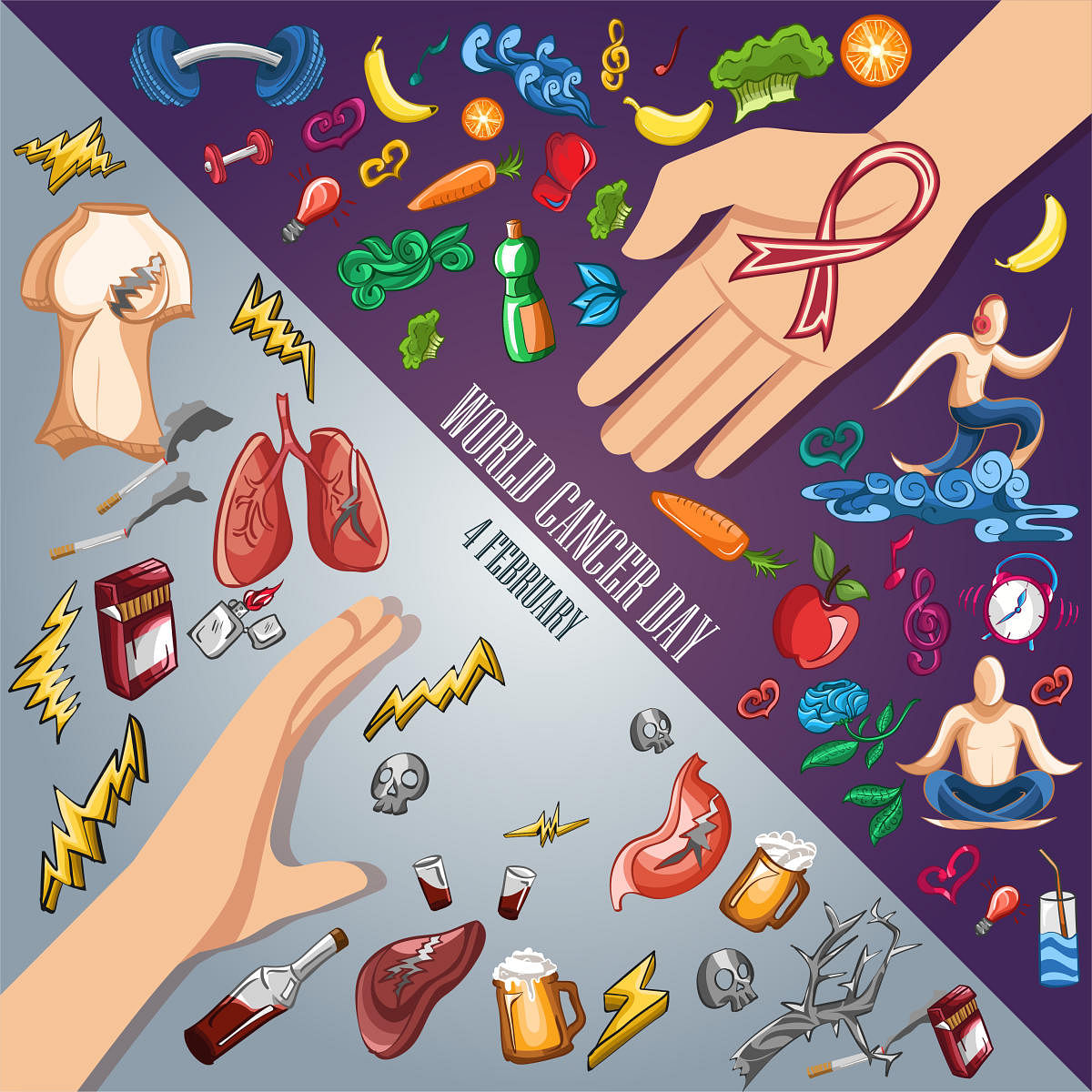
Cancer is not a new disease and was first described in Egypt as far back as 3000 BC, although the word cancer was not in existence then.
The origin of the word ‘cancer’ is credited to Hippocrates who is considered the Father of Medicine. In Greek, these words refer to a crab, most likely applied to the disease because of the finger-like spreading projections. In those early days it was noted that this condition had no treatment. However, medicine has evolved enormously since then and cancers can be prevented and many can be cured if diagnosed in the early stages.
As a gynaecologist, some of the questions that I am asked frequently are: What are the common cancers that can affect a woman? Will my condition turn into cancer — i.e pre-malignant conditions? How can I reduce my risk of cancer? If I have cancer, will my daughter get it too?
What are the most common cancers that afflict Indian women?
The most common cancers in Indian women are breast, cervical, colorectum, ovary, lip and oral cancer. Until a few years ago, cervical cancer was the most common cancer in Indian women. However, this has been overtaken by breast cancer especially in the metros, for reasons poorly understood.
Breast cancer is the most common cancer in Indian women and accounts for 27% of all cancers in women. About one in 28 women are likely to develop breast cancer during their lifetime. In the urban areas, the incidence is one in 22 as compared to the rural areas where one in 60 women develop breast cancer. The incidence begins to rise in the early 30s and peaks at the age of 50–64 years.
How can I reduce my risk? Can breast cancer be
prevented?
The cause of breast cancer is not known. Hence it is not known if it can be prevented completely. Studies have looked at the link between breast cancer and diet and exercise. Although there are no definite conclusions, there are benefits for women who exercise regularly, maintain a healthy weight, do not smoke and have a low intake of alcohol. Women who breastfeed are also at a lower risk of breast cancer.
Breast cancer
Breast cancer cannot be prevented. However, if it is detected early, it is easier to treat. In the past, breast self-examination was advocated to help pick up cancer early. However, breast examinations are no longer a part of the screening recommendations because research does not show they provide a clear benefit. Still, the American Cancer Society says all women should be familiar with how their breasts normally look and feel and report any changes to their doctor immediately.
Mammograms are advocated as screening procedure to pick up early cancer. These can be done from the age of 45 onwards, at regular intervals, as recommended by your doctor.
In some cases, breast cancer may have a genetic disposition and this has to be discussed with your doctor.
Cervical cancer
The incidence of cervical cancer in India is 22.86% making it the second most common cancer among women in India. The average age of affliction is 38 years with a range of 21–67 years. It is thought to be caused by the Human Papilloma Virus (HPV) through sexual contact. It is not common in women who are not sexually active. It is more common in rural women and less common in Muslims.
How can I reduce my risk? Can
cervical cancer be prevented?
Ways of reducing the risk of cervical cancer include, using condoms, not smoking, getting regular pap smears done, being vaccinated against HPV virus, and not having multiple partners.
Cervical cancer is most often preceded by a pre-cancerous stage. This stage can be detected with preventive screening tests such as the pap smear and HPV test. If a pre-cancer is found, it can be treated, stopping cervical cancer before it really starts. Most invasive cervical cancers are found in women who have not had regular pap tests.
The HPV vaccine is now available and helps reduce the risk of cervical cancer. It is primarily given to adolescent girls. They will, however, have to continue to have regular pap smears once they are sexually active.
Cervical cancer does not have a genetic or familial predisposition and hence will not affect any other female member of the family.
Ovarian cancer
The incidence of ovarian cancer in India is between 0.9 and 8.4/100,000. The risk starts increasing from age 35 and reaches a peak between the ages of 55–64 years. The exact cause of ovarian cancer is unknown. The risk increases after the age of 50 and it can run in families with a history of ovarian, breast and colorectal cancers, personal history of breast cancer, endometriosis, being overweight, and the usage of fertility pills continuously for more than one year also increases the risk.
Factors that reduce the risk are a full-term pregnancy before the age of 26, birth control pills used for three–six months, or more and tubal ligation or sterilisation.
There are no specific screening methods for this disease and therefore, unfortunately, it is detected only in the later stages.
However, some of the non-specific warning signs are bloating of the abdomen, feeling full quickly after eating, frequent urination, abdominal pain, loss of weight and nausea.
Lifestyle factors
Lifestyle factors such as smoking, diet (fried foods, red meat), alcohol, sun exposure, environmental pollutants, infections, stress, obesity, and physical inactivity can cause 90-95% of cancers.
The evidence indicates that of all cancer-related deaths, almost 25–30% are due to tobacco, as many as 30–35% are linked to diet, about 15–20% are due to infections, and the remaining percentage are due to other factors like radiation, stress, physical activity, environmental pollutants etc.